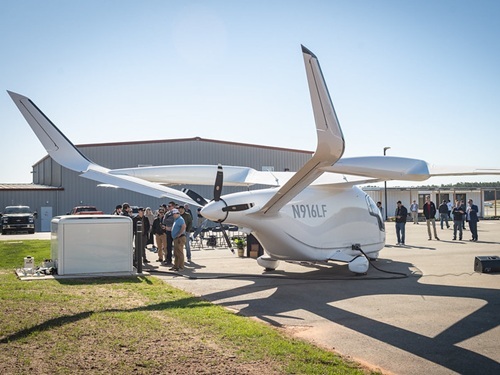The Connecticut Department of Transportation is helping “plug in” two all-electric buses into local transit routes in Bridgeport – with more on the way – as part of the agency’s effort to reduce greenhouse gas or GHG emissions across the state.
[Photo courtesy of the Connecticut Governor’s Office.]
The Connecticut DOT also is helping to finance charging stations, project management, and training for mechanics to maintain the new buses by tapping into Federal Transit Administration (FTA) 5307 Formula Funding, which helps cities and states with capital and operating costs for transportation-related planning.
Proterra manufactured those two all-electric battery-powered buses – the first ever deployed in Connecticut – which feature 440 kilowatt-hour (kWh) batteries, allowing them to operate up to 150 miles between charges. At a later date, Proterra plans to deliver three ZX5 model buses to that state; models equipped with 660 kWh batteries that can run up to 200 miles between charges.
“This is very much for us a test,” explained Doug Holcomb, general manager of Greater Bridgeport Transit (GBT). “We want to make sure the zero-emission buses work as well as a (diesel-powered) city bus.”
The environmental benefits of replacing diesel-engine buses with all-electric vehicles can be significant. Even after factoring in emissions from the electricity generated to run the buses, switching two diesel-engine buses to electric buses can reduce carbon dioxide emissions by about 450,000 pounds a year, according to GBT.
The start-up costs can be steep, however. The 40-foot electric battery buses cost about $200,000 more than their traditional diesel counterparts, a 125-kWh charger runs about $60,000, and mechanics need training on how to maintain those new buses. “It’s a whole different animal, from the monocoque body to the different components it has,” Holcomb said.
Yet GBT believes lower operating costs will balance the ledger over the long haul. Electricity costs for two electric buses are around $36,000 a year, compared to about $58,000 a year to fuel two diesel buses for the same number of miles, according to the agency. Plus, maintenance costs are expected to drop by about 30 percent because of fewer moving parts, fewer lubricants, and improved brake life.
Battery life may be affected by colder weather, Holcomb said, but GBT is installing heaters that don’t run off the main batteries to maximize miles.
Other state departments of transportation are also sponsoring a variety of electric bus initiatives.
The New York State Department of Transportation, for example, is providing $7 million in funding to support the deployment of 10 all-electric buses for the Rochester-Genesee Regional Transportation Authority’s Regional Transit Service or RTS fleet that serves more than 1.1 million New Yorkers in eight counties of the Finger Lakes Region.
“New York State continues to make smart, sustainable investments in our transportation systems that will result in a reduced carbon footprint across the Empire State benefiting generations to come,” explained Marie Therese Dominguez, commissioner of the New York State DOT, in an October 7 statement. “We are excited to lead the way in addressing our changing climate and supporting the electrification of public transit systems here in Rochester and across the state.”
The FTA also continues to provide state DOTs with funds to make further investments in electric buses and related systems. In June, the agency issued $130 million in grants via its Low- or No-Emission program that provided the Colorado Department of Transportation, Idaho Transportation Department, and Massachusetts Department of Transportation – among others – with funds to acquire and/or expand electric-powered buses for local transit fleets.




